The Art Center College of Design
On Thursday, April 10, I, along with several other NASA officials, was on hand to view presentations designed and developed by students attending the Art Center College of Design in Pasadena, California. About a year ago, NASA partnered with the Art Center to hit a target generation known as Millennials (those born after 1982 — and my senior year in high school). The Art Center is in a unique position to offer ideas and strategies on communicating with and engaging the Millennials.
NASA employees know what the acronym NASA stands for and NASA has far-reaching brand recognition, right? How many of you would be surprised that while most people recognize the acronym and know that it is associated with “space,” some people actually have no specific knowledge about this Agency’s missions, achievements or contributions? When you consider the Millennial generation in particular, you realize that NASA is not even on their radar screen. This realization and our commitment to inspire and engage the next generation motivated us to work with the Art Center to design two projects for NASA.
The first project, Mission: Millennial, focused on designing ways for NASA to more effectively communicate its missions, goals and benefits to young adults. The second, NASA Lunar Rover Project, focused on designing the optimal human lunar rover. In addition to the functionality of the designs, it was also meant to inspire those to want to go for a ride.
Mission: Millennial project teams with the names NASAtastics, NASAnauts and RedRocks, used a variety of mediums, such as nostalgia, retro cool approaches, redesigned websites with Facebook components and gaming, to project how NASA should look and feel to the Millennial generation. More importantly, the students shared how much they learned about the impact that NASA has had on their everyday life and how much the Agency has contributed to advancing technology. I even learned when to reach for my “stunnas” (note to my older generation: stunnas are a particular type of sunglasses).
 |
 |
NASA Lunar Rover Project: Individual students produced some amazing designs for the lunar rover. With names like ALEX (Advanced Lunar Explorer), Moonstream, NASA THESEUS, Hotwheels, and T.O.A.D. (To Observe Analyze and Defend), these vehicles proposed a wide range of solutions to the issues astronauts will face on the Moon. While the complexity of the designs showed the extensive research and time invested by the Art Center students, the functionality and sleekness made you want to suit up and drive. It was quite exciting to be surrounded by the enthusiasm of the student design teams.
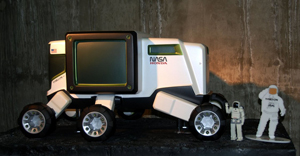 |
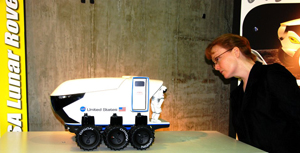 |
 |
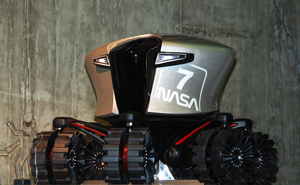 |
.jpg) |
.jpg) |
Yuri’s Night, Bay Area 2008
On Saturday night, April 12, I was at the Yuri’s Night celebration at Ames Research Center. This is the second year for this celebration on-site at Ames. It recognizes the anniversary of Yuri Gagarin’s first spaceflight on April 12, 1961. He flew one orbit, at the age of 27, to become the first human to orbit the Earth. Celebrations also were held at Johnson Space Center and Goddard Space Flight Center, not to mention the other parties around the globe on this historic date. To open the festivities, Center Director Dr. Pete Worden appeared in a Soviet general’s uniform in recognition of Yuri’s homeland. Pete and I cut the ceremonial ribbon.
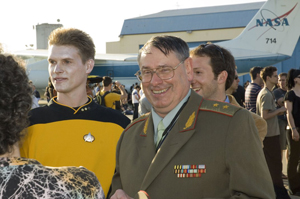 |
 |
 |
 |
I wanted to attend as I had heard that it is very popular with Millennials. There was an air show, displays, bands, live performances, and interesting costumes. This did not have a traditional NASA-feel to it and that’s one reason it appeals to a younger crowd. As I was walking around, I was imagining this event (with this crowd) at HQ or most of the other centers — but I couldn’t get my head around that thought. I suppose you’d need to experience it to know what I mean. I didn’t stay very late, but from all that I saw, it looked like a very successful event and made Ames accessible, in a fun way, to the surrounding community. Pete makes it possible so my hat is off to him.
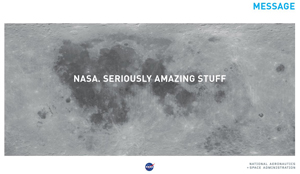 |
 |
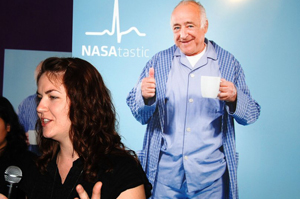 |
.jpg) |
